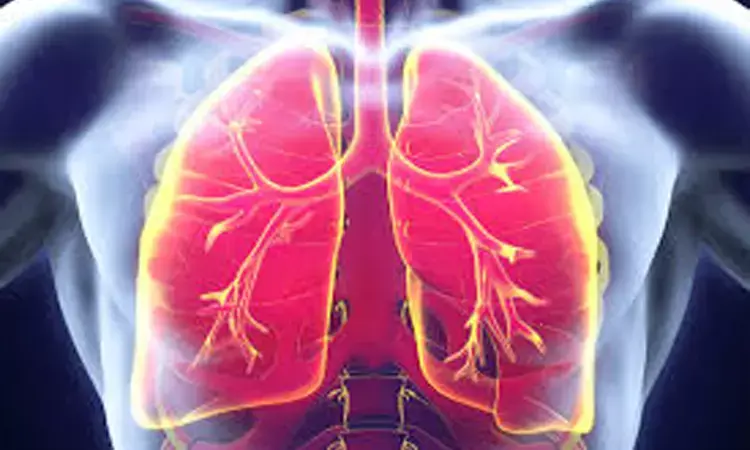- Home
- Medical news & Guidelines
- Anesthesiology
- Cardiology and CTVS
- Critical Care
- Dentistry
- Dermatology
- Diabetes and Endocrinology
- ENT
- Gastroenterology
- Medicine
- Nephrology
- Neurology
- Obstretics-Gynaecology
- Oncology
- Ophthalmology
- Orthopaedics
- Pediatrics-Neonatology
- Psychiatry
- Pulmonology
- Radiology
- Surgery
- Urology
- Laboratory Medicine
- Diet
- Nursing
- Paramedical
- Physiotherapy
- Health news
- Fact Check
- Bone Health Fact Check
- Brain Health Fact Check
- Cancer Related Fact Check
- Child Care Fact Check
- Dental and oral health fact check
- Diabetes and metabolic health fact check
- Diet and Nutrition Fact Check
- Eye and ENT Care Fact Check
- Fitness fact check
- Gut health fact check
- Heart health fact check
- Kidney health fact check
- Medical education fact check
- Men's health fact check
- Respiratory fact check
- Skin and hair care fact check
- Vaccine and Immunization fact check
- Women's health fact check
- AYUSH
- State News
- Andaman and Nicobar Islands
- Andhra Pradesh
- Arunachal Pradesh
- Assam
- Bihar
- Chandigarh
- Chattisgarh
- Dadra and Nagar Haveli
- Daman and Diu
- Delhi
- Goa
- Gujarat
- Haryana
- Himachal Pradesh
- Jammu & Kashmir
- Jharkhand
- Karnataka
- Kerala
- Ladakh
- Lakshadweep
- Madhya Pradesh
- Maharashtra
- Manipur
- Meghalaya
- Mizoram
- Nagaland
- Odisha
- Puducherry
- Punjab
- Rajasthan
- Sikkim
- Tamil Nadu
- Telangana
- Tripura
- Uttar Pradesh
- Uttrakhand
- West Bengal
- Medical Education
- Industry
Refined CT imaging can identify residual thrombi 1 year after acute Pulmonary embolism

Japan: A team of researchers from Japan reported a high prevalence (74%) of residual thrombi 1 year after acute pulmonary embolism (PE) using refined computed tomography (CT) imaging. Precise CT imaging can therefore be included in the long-term treatment strategy of acute PE. The findings of the study appear in the Journal of Thrombosis and Haemostasis.
Post-pulmonary embolism syndrome is an important clinical condition that can impact the long-term prognosis after acute PE. Yoshihisa Nakano and colleagues aimed to evaluate the prevalence of residual pulmonary thrombi and the thrombotic burden 1 year after acute PE, by using a refined CT imaging method in a prospective study.
The researchers recruited patients diagnosed with acute PE and examinations were conducted at 1 month, 6 months, and 1 year. Especially at 1 year, patients were evaluated multifacetedly, including laboratory tests, 6-min walking test, quality-of-life, and enhanced CT.
The findings of the study were as follows:
- Fifty-two patients were enrolled. Two patients (3.8%) developed chronic thromboembolic pulmonary hypertension.
- A total of 43 patients completed evaluation at 1 year, among whom (74%) had residual thrombi, with a median modified CT obstruction index (mCTOI) of 10.7%.
- In multivariate analysis, residual thrombi at 1 month was the only factor significantly related to residual thrombi at 1 year (odds ratio, 103.4).
- The tricuspid regurgitation pressure gradient ≥60 mmHg and left ventricular end-diastolic dimension at diagnosis were significantly related to mCTOI at 1 year (β = 0.367 and β = –0.435 respectively).
"We found a high incidence of residual pulmonary thrombi 1 year after acute PE using enhanced CT imaging protocol. Furthermore, right ventricular overload was significantly related to the thrombotic burden," the researchers wrote in their study.
They suggest, that "the treatment strategy for acute PE should include the modified CT imaging protocol with mCTOI for accurately monitoring residual pulmonary thrombotic burden."
Reference:
The study titled, "Usefulness of a refined computed tomography imaging method to assess the prevalence of residual pulmonary thrombi in patients 1 year after acute pulmonary embolism: The Nagoya PE study," was published in the Journal of Thrombosis and Haemostasis.
Dr Kamal Kant Kohli-MBBS, DTCD- a chest specialist with more than 30 years of practice and a flair for writing clinical articles, Dr Kamal Kant Kohli joined Medical Dialogues as a Chief Editor of Medical News. Besides writing articles, as an editor, he proofreads and verifies all the medical content published on Medical Dialogues including those coming from journals, studies,medical conferences,guidelines etc. Email: drkohli@medicaldialogues.in. Contact no. 011-43720751


